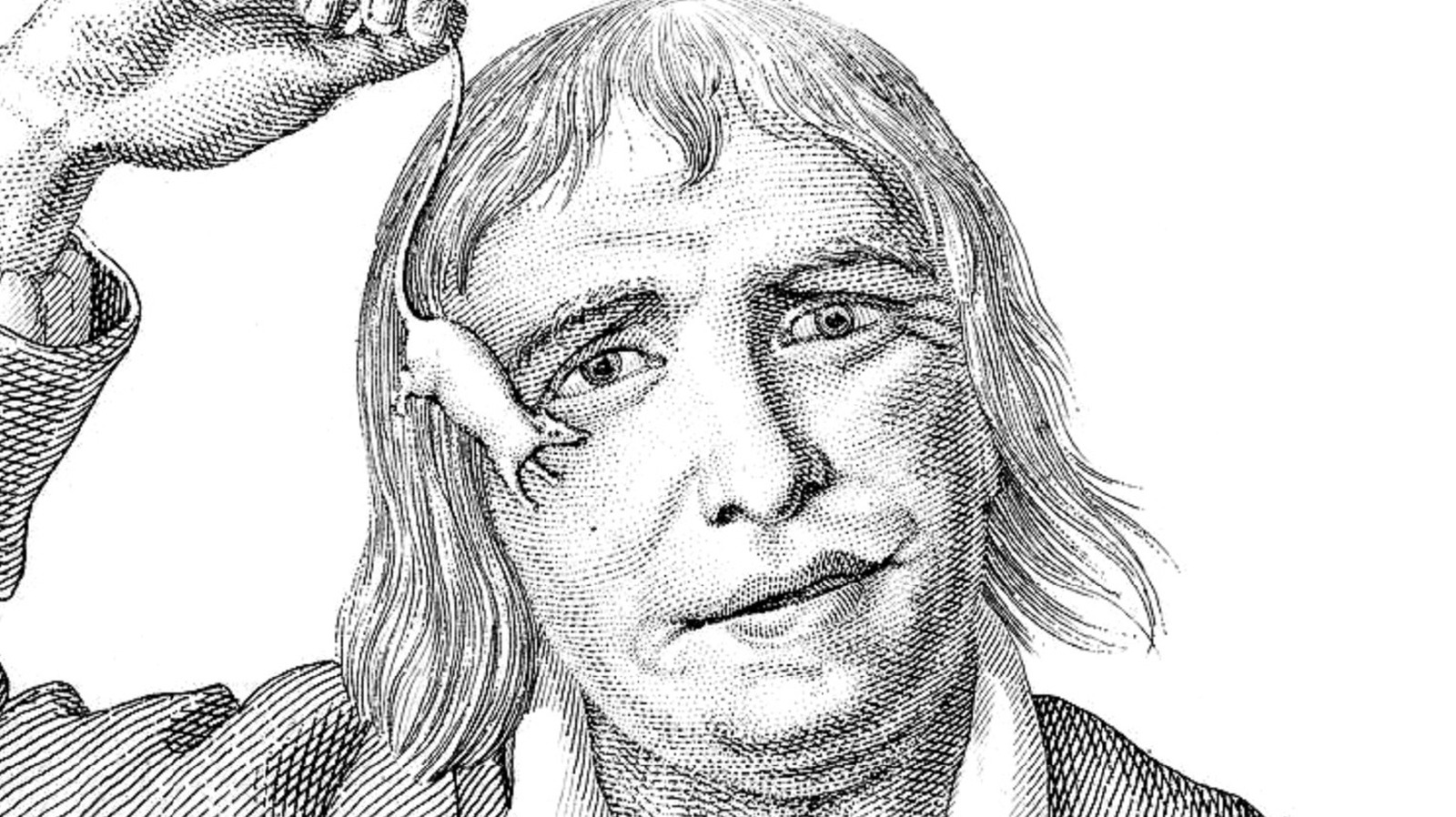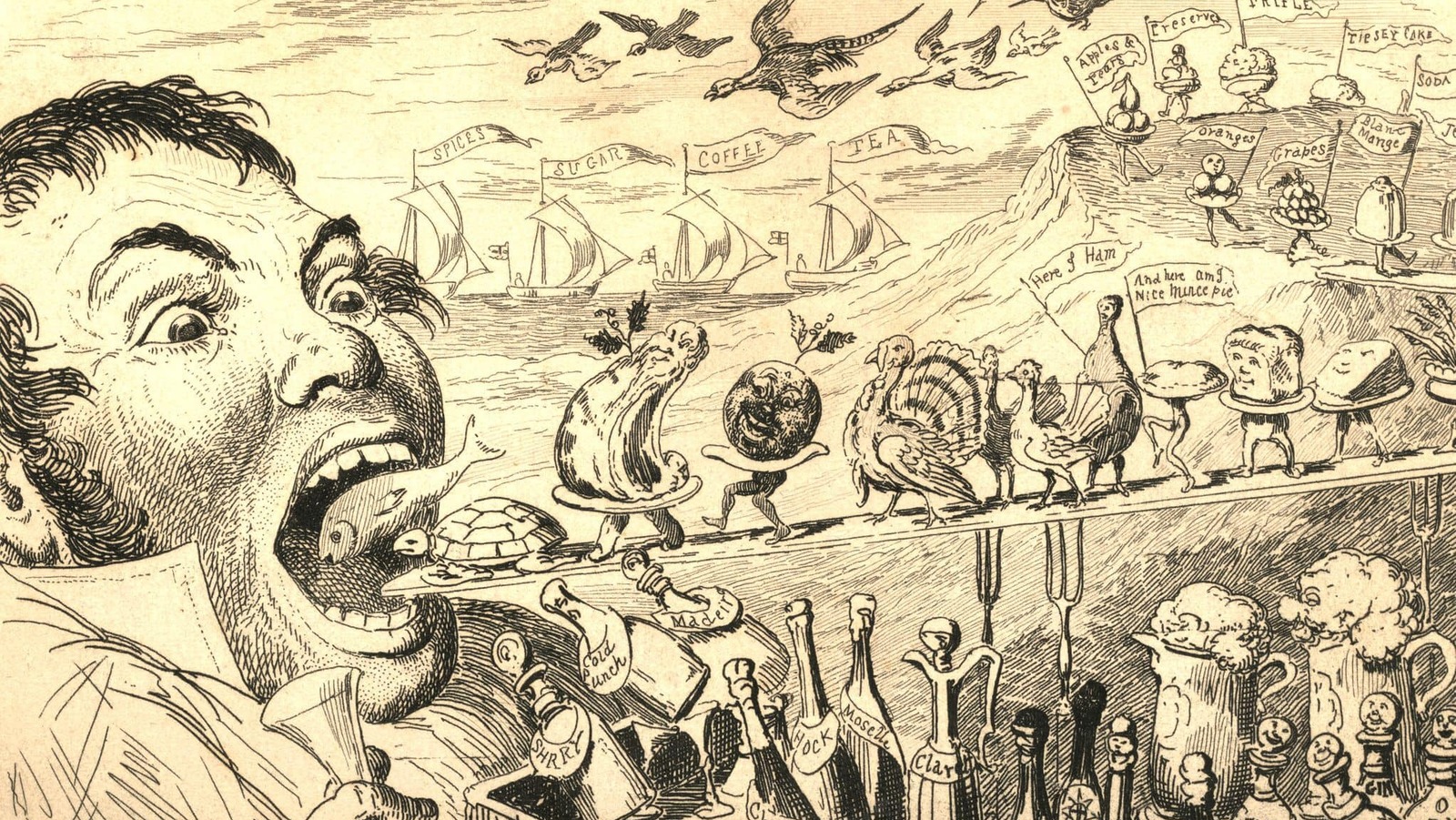The Bizarre Autopsy Of Tarrare: An Unsettling Account Of A French Enigma
What is the Tarrare Autopsy?
The Tarrare autopsy was a post-mortem examination of the body of Tarrare, a French soldier who suffered from an insatiable hunger. The autopsy revealed that Tarrare's stomach was massively enlarged, and that he had a number of other unusual anatomical features, including a very long tongue and a large liver. The autopsy also found that Tarrare had died from tuberculosis.
The Tarrare autopsy is important because it provides a unique insight into a rare medical condition. Tarrare's case is one of the most extreme examples of insatiable hunger ever recorded, and his autopsy findings have helped to shed light on the causes of this condition. The autopsy has also helped to raise awareness of the importance of early diagnosis and treatment of tuberculosis.
The Tarrare autopsy is a fascinating and important historical document. It provides a glimpse into the life of a man who suffered from a truly extraordinary medical condition, and it has helped to advance our understanding of both insatiable hunger and tuberculosis.
Tarrare Autopsy
The Tarrare autopsy was a post-mortem examination of the body of Tarrare, a French soldier who suffered from an insatiable hunger. The autopsy revealed a number of unusual anatomical features, including a massively enlarged stomach, a very long tongue, and a large liver. The autopsy also found that Tarrare had died from tuberculosis.
- Medical condition: Tarrare's insatiable hunger was likely caused by a rare medical condition.
- Anatomical features: The autopsy revealed a number of unusual anatomical features, including a massively enlarged stomach, a very long tongue, and a large liver.
- Cause of death: The autopsy found that Tarrare had died from tuberculosis.
- Historical significance: The Tarrare autopsy is a fascinating and important historical document.
- Medical importance: The autopsy has helped to shed light on the causes of insatiable hunger and tuberculosis.
- Cultural impact: The Tarrare autopsy has been the subject of numerous books, articles, and documentaries.
The Tarrare autopsy is a unique and valuable medical document. It provides a glimpse into the life of a man who suffered from a truly extraordinary medical condition. The autopsy has also helped to advance our understanding of both insatiable hunger and tuberculosis.
Medical condition
The Tarrare autopsy revealed that he had a number of unusual anatomical features, including a massively enlarged stomach, a very long tongue, and a large liver. These features are consistent with a rare medical condition known as Prader-Willi syndrome. Prader-Willi syndrome is a genetic disorder that causes insatiable hunger, intellectual disability, and behavioral problems. It is thought to be caused by a deletion or mutation of genes on chromosome 15.
The Tarrare autopsy is important because it provides evidence that Prader-Willi syndrome can cause insatiable hunger. This finding has helped to improve the diagnosis and treatment of Prader-Willi syndrome. It has also raised awareness of the importance of early intervention for children with Prader-Willi syndrome.
The Tarrare autopsy is a reminder that rare medical conditions can have a profound impact on a person's life. It is important to be aware of these conditions so that they can be diagnosed and treated early.
Anatomical features
The autopsy of Tarrare revealed a number of unusual anatomical features, including a massively enlarged stomach, a very long tongue, and a large liver. These features are significant because they provide evidence of the underlying medical conditions that caused Tarrare's insatiable hunger.
- Massively enlarged stomach: Tarrare's stomach was massively enlarged, measuring over 20 inches in length and 10 inches in width. This enlargement was likely caused by a combination of factors, including Tarrare's insatiable hunger and his habit of swallowing large objects.
- Very long tongue: Tarrare's tongue was very long, measuring over 12 inches in length. This elongation may have been caused by a number of factors, including Tarrare's habit of licking his lips and swallowing saliva.
- Large liver: Tarrare's liver was also enlarged, weighing over 10 pounds. This enlargement may have been caused by a number of factors, including Tarrare's malnutrition and his habit of drinking alcohol.
The anatomical features revealed by the Tarrare autopsy provide important insights into the medical conditions that caused his insatiable hunger. These features also highlight the importance of early diagnosis and treatment for individuals with rare medical conditions.
Cause of death
The autopsy of Tarrare revealed that he had died from tuberculosis, a bacterial infection that primarily affects the lungs. Tuberculosis is a serious disease that can be fatal if left untreated. It is spread through the air when an infected person coughs or sneezes. Tarrare likely contracted tuberculosis while living in unsanitary conditions in Paris.
- Pulmonary tuberculosis: This is the most common form of tuberculosis, and it affects the lungs. Symptoms include coughing, chest pain, and shortness of breath.
- Extrapulmonary tuberculosis: This form of tuberculosis affects organs other than the lungs, such as the lymph nodes, bones, or kidneys. Symptoms vary depending on the affected organ.
- Latent tuberculosis: This is a type of tuberculosis infection that does not cause any symptoms. People with latent tuberculosis are not contagious, but they can develop active tuberculosis later in life.
Tarrare's case highlights the importance of early diagnosis and treatment for tuberculosis. Tuberculosis is a curable disease, but it can be fatal if left untreated. If you have any symptoms of tuberculosis, see your doctor immediately.
Historical significance
The Tarrare autopsy is a fascinating and important historical document for several reasons. First, it provides a unique glimpse into the life of a man who suffered from an extremely rare and unusual medical condition. Second, it helps to shed light on the causes of insatiable hunger, a condition that is still not fully understood today. Third, the autopsy provides valuable insights into the medical practices and knowledge of the early 19th century.
- Medical insights: The autopsy findings have helped to advance our understanding of insatiable hunger and other rare medical conditions.
- Historical context: The autopsy provides a glimpse into the medical practices and knowledge of the early 19th century.
- Cultural impact: The Tarrare autopsy has been the subject of numerous books, articles, and documentaries, and it continues to fascinate people today.
The Tarrare autopsy is a valuable historical document that provides important insights into medical history, rare medical conditions, and the human body. It is a fascinating and important resource for researchers, medical professionals, and anyone who is interested in the history of medicine.
Medical importance
The Tarrare autopsy is a valuable medical document that has helped to shed light on the causes of insatiable hunger and tuberculosis. The autopsy findings have provided important insights into these rare and debilitating conditions, and have helped to improve the diagnosis and treatment of both.
- Causes of insatiable hunger: The autopsy findings have helped to identify some of the potential causes of insatiable hunger, including Prader-Willi syndrome and other genetic disorders. This information has helped to improve the diagnosis and treatment of insatiable hunger, and has also led to a better understanding of the underlying causes of this condition.
- Causes of tuberculosis: The autopsy findings have also helped to identify some of the potential causes of tuberculosis, including malnutrition and unsanitary living conditions. This information has helped to improve the prevention and treatment of tuberculosis, and has also led to a better understanding of the factors that contribute to the development of this disease.
- Diagnosis and treatment: The autopsy findings have also helped to improve the diagnosis and treatment of insatiable hunger and tuberculosis. The autopsy findings have provided important information about the symptoms and progression of these diseases, and have helped to develop more effective treatments.
The Tarrare autopsy is a valuable medical document that has helped to shed light on the causes, diagnosis, and treatment of insatiable hunger and tuberculosis. The autopsy findings have provided important insights into these rare and debilitating conditions, and have helped to improve the lives of countless people.
Cultural impact
The Tarrare autopsy has had a significant cultural impact, inspiring numerous books, articles, and documentaries. This is due to several factors, including the unusual and fascinating nature of Tarrare's medical condition, the historical significance of the autopsy, and the enduring fascination with the human body.
The autopsy findings have provided important insights into the causes of insatiable hunger and tuberculosis, and have helped to improve the diagnosis and treatment of both. The autopsy has also raised awareness of the importance of early intervention for children with rare medical conditions.
The Tarrare autopsy is a reminder that rare medical conditions can have a profound impact on a person's life. It is important to be aware of these conditions so that they can be diagnosed and treated early.
The Tarrare autopsy is a valuable historical document that provides important insights into medical history, rare medical conditions, and the human body. It is a fascinating and important resource for researchers, medical professionals, and anyone who is interested in the history of medicine.
FAQs about Tarrare Autopsy
The Tarrare autopsy is a fascinating and important historical document that provides insights into a rare medical condition. Here are some frequently asked questions about the Tarrare autopsy:
Question 1: What was the cause of Tarrare's insatiable hunger?
Answer: The exact cause of Tarrare's insatiable hunger is unknown, but it is thought to have been caused by a combination of factors, including a rare medical condition, malnutrition, and psychological factors.
Question 2: What were the unusual anatomical features revealed by the autopsy?
Answer: The autopsy revealed a number of unusual anatomical features, including a massively enlarged stomach, a very long tongue, and a large liver.
Question 3: What was the cause of Tarrare's death?
Answer: Tarrare died from tuberculosis, a bacterial infection that primarily affects the lungs.
Question 4: What is the historical significance of the Tarrare autopsy?
Answer: The Tarrare autopsy is a valuable historical document that provides insights into medical practices and knowledge of the early 19th century.
Question 5: What is the medical importance of the Tarrare autopsy?
Answer: The Tarrare autopsy has helped to shed light on the causes of insatiable hunger and tuberculosis, and has helped to improve the diagnosis and treatment of both.
Question 6: What is the cultural impact of the Tarrare autopsy?
Answer: The Tarrare autopsy has been the subject of numerous books, articles, and documentaries, and continues to fascinate people today.
The Tarrare autopsy is a valuable historical and medical document that provides important insights into a rare medical condition. It is a fascinating and important resource for researchers, medical professionals, and anyone who is interested in the history of medicine.
Back to Main Article
Tarrare Autopsy Tips
The Tarrare autopsy is a valuable historical and medical document that provides important insights into a rare medical condition. Here are some tips for understanding and interpreting the Tarrare autopsy:
Tip 1: Consider the historical context. The Tarrare autopsy was performed in the early 19th century, and medical knowledge and practices were very different at that time. It is important to keep this in mind when interpreting the autopsy findings.
Tip 2: Look for unusual anatomical features. The Tarrare autopsy revealed a number of unusual anatomical features, including a massively enlarged stomach, a very long tongue, and a large liver. These features may provide clues to the underlying medical conditions that caused Tarrare's insatiable hunger.
Tip 3: Consider the cause of death. Tarrare died from tuberculosis, a bacterial infection that primarily affects the lungs. This information may help to explain some of the findings of the autopsy, such as the presence of inflammation in the lungs.
Tip 4: Be aware of the limitations of the autopsy. The Tarrare autopsy was performed over 200 years ago, and some of the techniques and procedures used at the time may not be as accurate as they are today. It is important to be aware of these limitations when interpreting the autopsy findings.
Tip 5: Consult with experts. If you have any questions about the Tarrare autopsy, it is important to consult with experts in the field. Medical historians, pathologists, and other experts can provide valuable insights into the autopsy findings and their implications.
By following these tips, you can gain a better understanding of the Tarrare autopsy and its importance to medical history.
Back to Main Article
Tarrare Autopsy
The Tarrare autopsy is a fascinating and important historical document that provides insights into a rare medical condition. The autopsy findings have helped to shed light on the causes of insatiable hunger and tuberculosis, and have improved the diagnosis and treatment of both. The autopsy has also raised awareness of the importance of early intervention for children with rare medical conditions.
The Tarrare autopsy is a reminder that rare medical conditions can have a profound impact on a person's life. It is important to be aware of these conditions so that they can be diagnosed and treated early. The Tarrare autopsy is a valuable resource for researchers, medical professionals, and anyone who is interested in the history of medicine.
Article Recommendations


